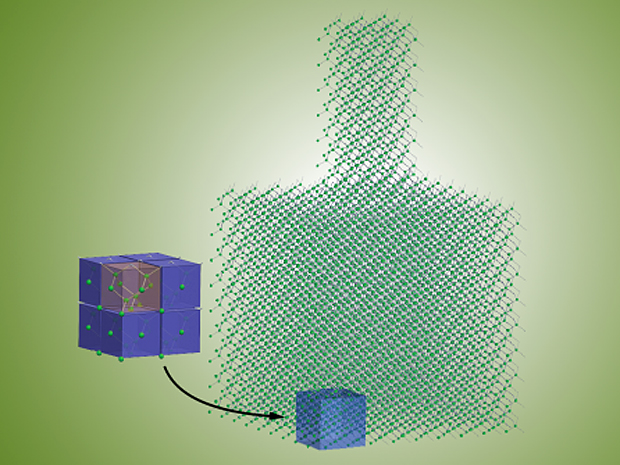
lllustration: University of Colorado Boulder
Researchers at the University of Colorado Boulder have developed a model of a thermoelectric material that can insulate itself from heat transfers while still allowing electricity to flow. Such a combination is the key to a material's ability to efficiently converting heat to electricity. The trick is to place an array of nanopillars on top of the thermoelectric material, in this case a silicon-based thin film.
The basic principle of thermoelectric materials is that the difference in temperature between one side of the material and the other generates electricity. So, if you applied a voltage on one side of the material , one side would become hot while the other would cool. The problem has been that if the material used is good at insulating the heat exchanging between the two sides, it ends up not being very good for conducting electricity.
The solutions to this ‘Catch 22’ conundrum have been different chemical approaches, synthesizing new materials that could conduct electricity and still insulate the two sides from each other. Nanotechnology has been in the game for several years now.
What the Colorado researchers have done is to take a more structural than chemical approach by building an array of nanoscale pillars on top of a sheet of a thermoelectric material to form what the authors call a “nanophononic metamaterial.”
That’s a fair amount of jargon crammed into that name, so to explain it somewhat: Phonons are the vibrational motion of atoms in the crystal lattices of certain materials. A metamaterial can be broadly defined as an artificially structured material fabricated by assembling different, often nanoscale objects to take the place of the atoms and molecules that one would see in a conventional material. The resulting material has very different electromagnetic properties than those found in naturally occurring or chemically synthesized substances. The property of invisibility is just one of the amazing characteristics of certain metamaterials.
In the research, which was published in the journal Physical Review Letters (“Nanophononic Metamaterial: Thermal Conductivity Reduction by Local Resonance”), Mahmoud Hussein, an assistant professor at the University of Colorado Boulder, and doctoral student Bruce Davis showed through simulations that these nanopillars could slow down the heat transfer without affecting the flow of electrons.
In operation, the heat travels through the material as phonons (vibrations of atoms), but in this structure the phonons run into the vibrations of the nanopillars themselves. This slows them down and hinders the transfer of heat, but it does not interrupt the flow of electrons.
The researchers have calculated that they can slow down the heat flow by as much as 50 percent. But they also leave room for the possibility that the heat reduction could be even more dramatic, because of their conservative approach to their calculations.
The next step is to actually try and build these structures based on the models developed thus far. If they can be built, it would offer a way to take wasted heat generated from a range of devices, from laptops to power plants, and turn that into electricity.




